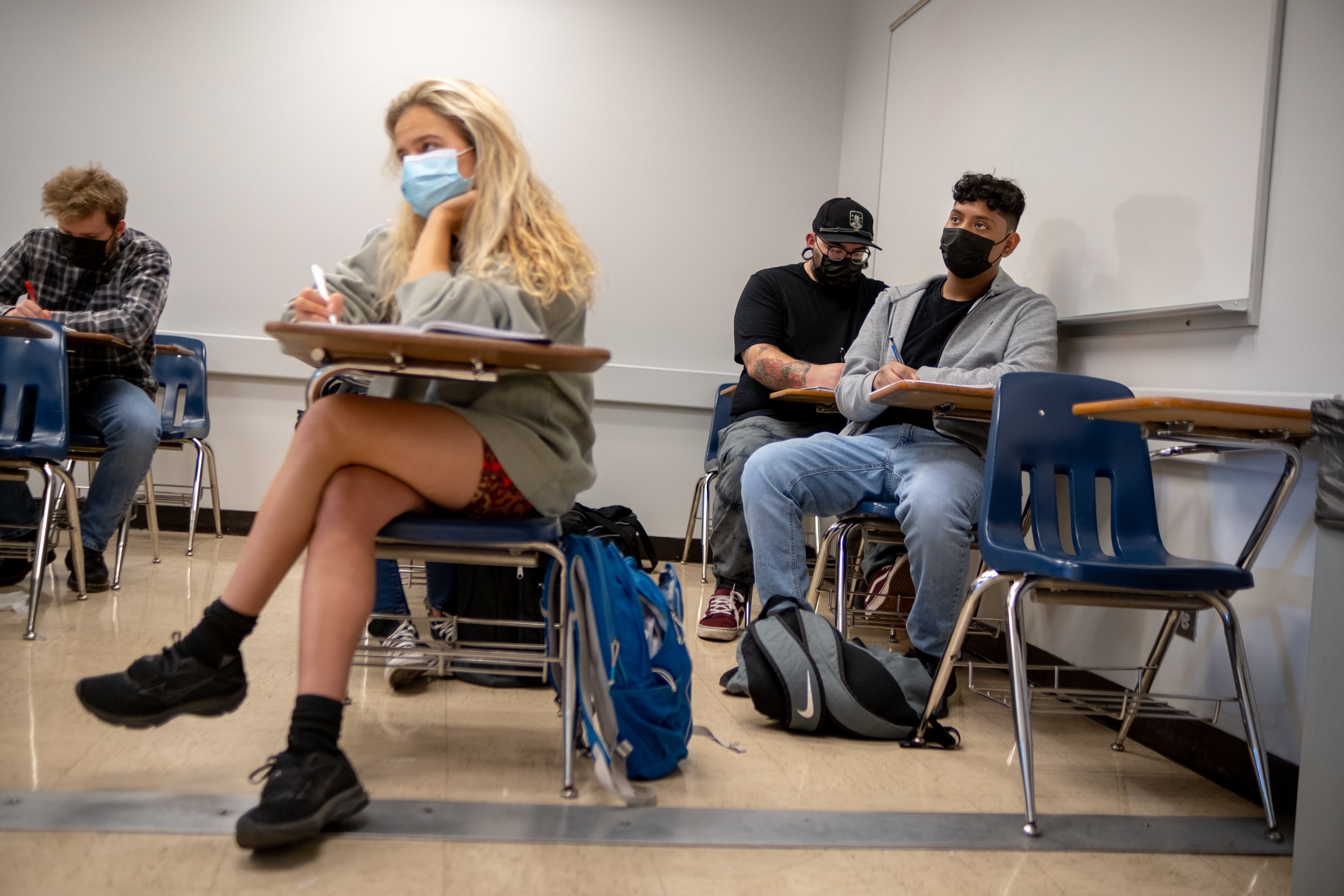Community colleges saw enrollment begin to stabilize last fall after steep pandemic declines, fueled in part by more new students and a surge of dually enrolled high-schoolers, according to new data released Thursday.
The figures from the National Student Clearinghouse shed further light on COVID-19’s sweeping impact on higher education, as institutions around the country now seek to climb out of deep enrollment troughs, and as data reveals diverging trends across different demographics.
Bucking a multi-year trend, overall enrollment at community colleges crept up by just under half a percent in the fall — essentially flattening after years of falling numbers that predated even the pandemic. That change came in part thanks to a more than 6% jump in new freshmen enrolling at community colleges nationwide, but still leaves the schools well below pre-pandemic norms. It’s the first time either trend has increased in at least five years, according to the data.
Doug Shapiro, executive director of the National Student Clearinghouse Research Center, said the figures offered encouraging signs of recovery.
“Although freshmen classes are still well below pre-pandemic levels, especially at community colleges, the fact that they are swinging upward in all sectors is a positive indicator for the future,” he said.
Still, pandemic losses were steep, and depressed enrollment numbers continue to plague colleges across the nation — especially at community colleges. Undergraduate freshman enrollment fell by about 10% in 2020, but that number leapt to 17% when isolated to just community colleges.
“It’s encouraging that there’s some rebound on new enrollment,” said John Fink, a community college researcher at Columbia University’s Teachers College. “But that’s in the context of community colleges being in a deep hole.”
He added losses have been particularly severe among older adults and recent high school graduates, with more and more individuals choosing either not to attend college or to go into four-year institutions.
“If you think about who community colleges serve, they’re open access institutions that serve local communities; they enroll higher shares of first-generation students and low-income students,” Fink said. “So community college students are very sensitive to external pressures, through work obligations, family obligations, and financial obligations.”
During the pandemic, “there were a lot of factors pulling students away from community colleges,” he said.
Even before COVID-19, though, community colleges were seeing declines in enrollment for older adults and recent high school graduates. At the same time, community colleges have experienced explosive growth in high school students enrolling in their courses.
And dual enrollments fueled the stabilizing fall numbers, too, seeing a 12% spike. Without those students, overall enrollment at community colleges fell nationwide by between 1.5% and 2%, according to Shapiro.
“Certainly that makes a difference from a degree-seeking perspective,” he said. “[But] in the context of the health of the institution, those dual-enrollments do make a difference.”
To Fink, the dually enrolled students represent one path forward for community colleges, serving as a potential on ramp for their schools and others.
“In many states, high school students make up a quarter or a third or more of community college enrollment,” he said. “What we’re hearing from colleges is that over the years as these programs have grown, sometimes there hasn’t been a lot of intentionality around connecting the college’s mission of access and equity with the dual enrollment work.”
Research has found that such programs have been less accessible to students of color and students from low-income backgrounds, despite showing positive outcomes for those who are able to participate, Fink added. Colleges have begun to strengthen their relationships with Title I schools and take other measures to bolster accessibility.
That work can be especially important as data shows diverging enrollment trends for students of color.
While Latino and Asian American students saw enrollment numbers beginning to rebound in the fall, Black and Native American student enrollment numbers declined further. Those trends held steady across undergraduate enrollment as a whole, and at community colleges in particular.
Enrollment trends outside of community colleges also began to stabilize, according to the data. Overall, the nation’s undergraduate enrollment shrunk by just 0.6% in the fall, despite falling by more than 3% in each of the prior pandemic years. Nonprofit four-year colleges also shifted by a fraction of a percent, while public four-year colleges saw a decline of roughly 1.4%.
“There’s still a long way to go,” Shapiro said. “But I think this is clearly an encouraging sign.”
Julian Shen-Berro is a reporter covering national issues. Contact him at jshen-berro@chalkbeat.org.






